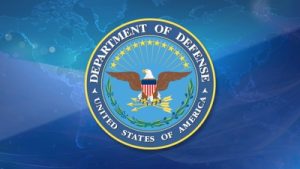
With more and more battles being fought in cyberspace, the pace of warfare has accelerated. However, the systems that support our warfighter were not designed to support the speed or types of products and services needed for modern defense. This year's AFCEA West Conference is focused on ensuring acquisition and readiness are on pace to meet global security demands. Ensuring our warfighters get the tools they need when they need them is a critical effort requiring evolution and reform of defense acquisition.
Improved Private Sector Coordination
A congressional hearing in late 2023 discussed the need for the Department of Defense (DoD) to tap into the innovation taking place in the private sector to stay competitive with global adversaries. A draft of the national defense industrial strategy stated that the defense industrial base "does not possess the capacity, capability, responsiveness, or resilience required to satisfy the full range of military production needs at speed and scale."
To supplement the gaps within the defense industrial base, the DoD needs ways to more easily acquire needed solutions from private-sector companies. This includes making it easier for small companies to do business with the government, which may involve partnerships with venture capital organizations. These groups could provide the needed financing that will allow small companies to scale to meet the needs of DoD.
Shifting Compliance Mindset
The culture within DoD is one of compliance, ensuring that every solution and process meets the exacting standards for security and reliability. However, when being asked to innovate, compliance frequently needs to take a backseat to speed. The DoD needs to become more risk-tolerant to enable solutions that may not be compliant but are nonetheless proven and secure to get fielded.
Space Systems Command (SSC) is working hard to change the traditional mindset and "pivot toward the threat." The agency is working closely with industry partners to put Artificial Intelligence (AI) and Machine Learning in every system that they are currently building to keep pace with technology being used by near-peer adversaries.
Introducing Training
Even if all of the barriers to acquiring technology were lifted, innovative solutions cannot have an impact if people do not know how to use them. Training warfighters to use and understand the inputs of AI is a critical step in modernizing the defense toolset. Innovative solutions must be easy to use and suitable for training personnel. The cost of training needs to be factored into the investment in any new technology. Similarly, new processes that need to be introduced, such as continual vetting of AI models and outputs that feed mission decisions, need to be considered before these emerging tech solutions are implemented.
If you can't make it to AFCEA West, there are many other events and resources available for better understanding the acquisition needs of the modern DoD.
- Defense IT Summit (February 9, 2024; Arlington, VA) - Federal and industry leaders will discuss how IT modernization programs are restructuring the defense landscape. Hear senior leadership's priorities and get a jump start on the shifting needs around artificial intelligence, JADC2, data innovation, and workforce development. Join us for insights on the future of national security.
- 2024 Air Force Contracting Summit (February 22-23, 2024; Orlando, FL) - Get access to details on Air Force strategy as well as information on upcoming contracts.
- 2024 Human Systems Conference (March 21-22, 2024; Arlington, VA) - As technology advances, the role of the human evolves. With these changes, it becomes ever more important to involve the end-user directly in technology design. This year's conference will feature conversations related to implementation of HSI within existing defense platforms, as well as an activity created to help designers and acquisition managers keep pace with the evolving role of the human.
- Defense Tech Week 2024 (March 25-29, 2024; virtual) - The ability to connect, sense, share information, and take action in a rapid manner using advanced technology will be imperative in delivering decision advantage. Join influential leaders and innovators to discuss technology's critical role in the future of modern U.S. defense and national security.
- Emerging Technology Challenge: Advancing Open Innovation Through Public and Private Collaboration (white paper) - ACT-IAC's Emerging Technology Challenge will establish a knowledge base and interoperable structure for Federal agencies to use for secure, robust public and private collaboration across the emerging technology ecosystem. This white paper is a summary of the results of ACT-IAC's Emerging Tech Days, Use Case Summits, and other innovation focused events, outlining how these approaches inform the Emerging Technology Challenge.
- Artificial Intelligence: DoD Needs Department-Wide Guidance to Inform Acquisitions (white paper) - This report examines key factors that private companies reported considering when acquiring AI capabilities. It then looks at the extent to which DoD has department-wide AI acquisition guidance and how, if at all, this guidance reflects key factors identified by private sector companies. The paper includes four recommendations for DOD and the three military departments.
For more on DoD acquisition reform and technology needs, explore the resources available on GovEvents and GovWhitePapers.




